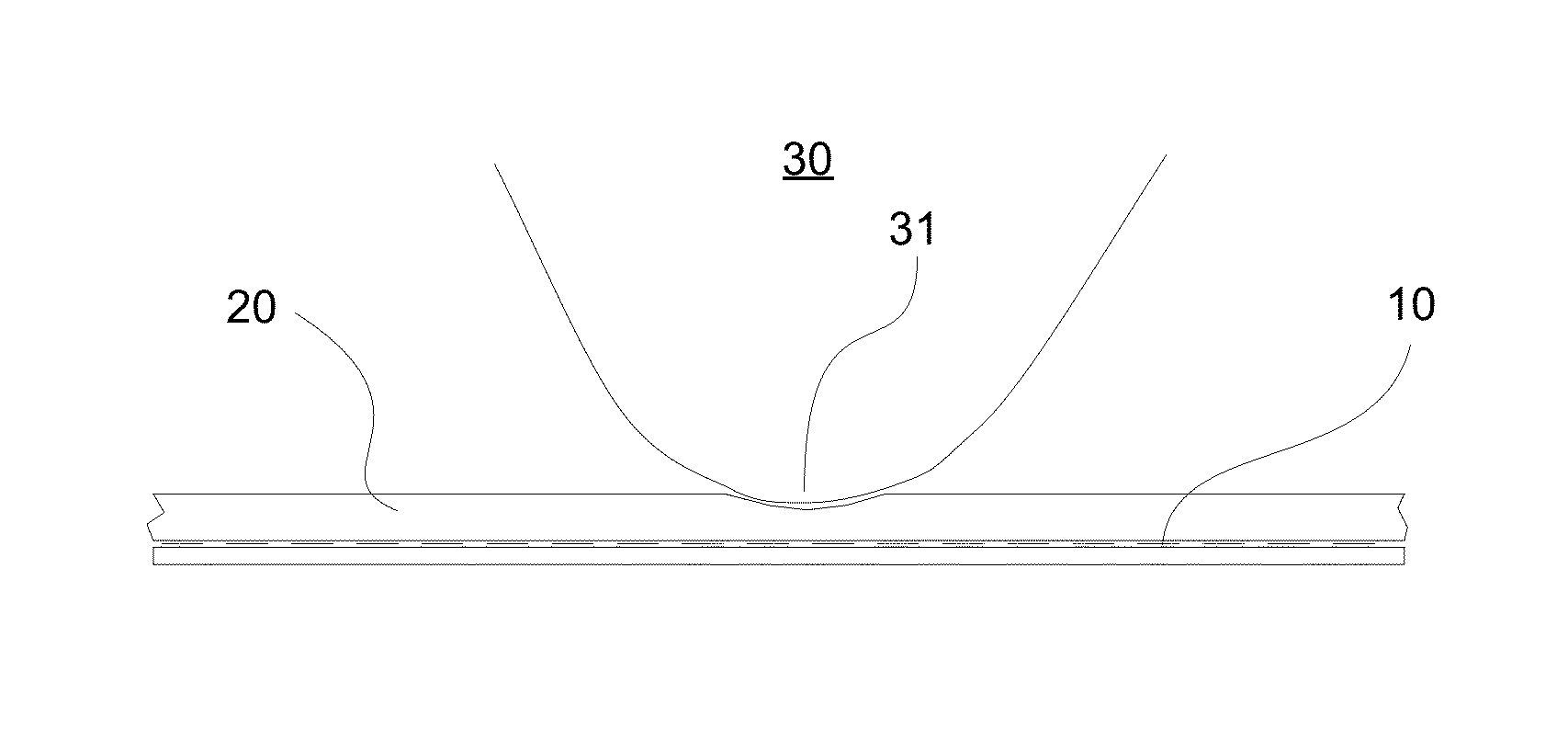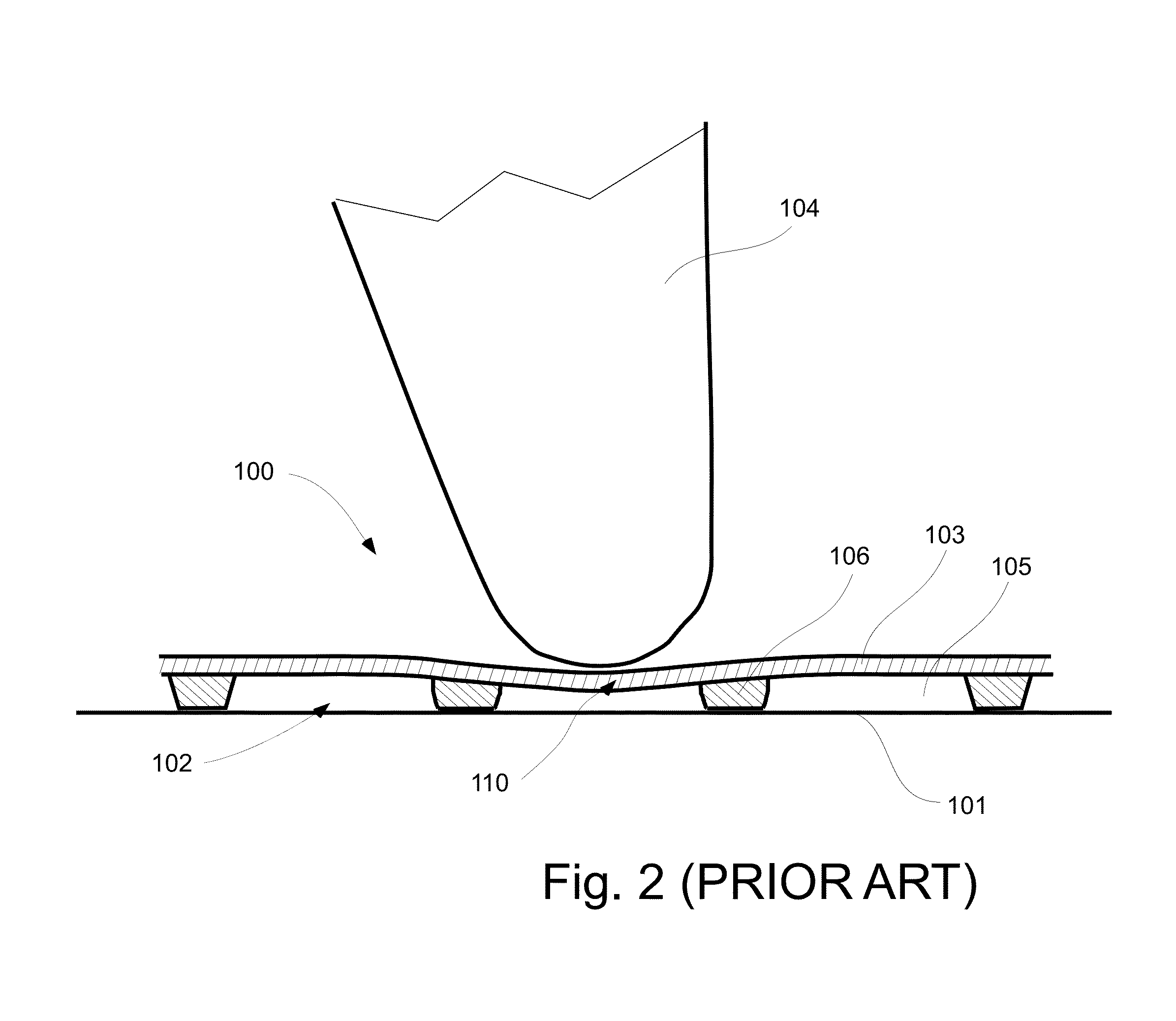Capacitive proximity tactile sensor
a tactile sensor and capacitive technology, applied in the field of capacitive proximity sensors, can solve the problems of inaccurate scale performance, inability to effectively measure the progressive force applied by the object onto the surface of the sensor, and the proximity effect does not measure the pressure or the force applied by the object, etc., to achieve uniform sensitivity and improve the effect of simple manufacturing process
- Summary
- Abstract
- Description
- Claims
- Application Information
AI Technical Summary
Benefits of technology
Problems solved by technology
Method used
Image
Examples
Embodiment Construction
[0023]A detailed description of the present invention follows with reference to accompanying drawings in which like elements are indicated by like reference letters and numerals.
[0024]FIG. 3 depicts the general illustration of the sensor of the present invention which includes two main elements—At least one capacitive sensing electrode layer 10 and a compressible non-conductive layer 20. The capacitive sensing electrode layer 10 is formed in a manner similar to that of traditional proximity sensor arrays. It contains a number of locations (pixels) capable of measuring electrical and capacitive characteristics when a conductive object 30 is positioned nearby. Specific number of pixels and their design depend highly on a particular application; some examples of those are described in more detail below. Signals from individual pixels are transmitted via a cable (not shown) to a control unit (not shown). In some applications, the control unit is incorporated within the sensor device its...
PUM
| Property | Measurement | Unit |
|---|---|---|
| compressibility | aaaaa | aaaaa |
| forces | aaaaa | aaaaa |
| capacitance | aaaaa | aaaaa |
Abstract
Description
Claims
Application Information
 Login to View More
Login to View More - R&D
- Intellectual Property
- Life Sciences
- Materials
- Tech Scout
- Unparalleled Data Quality
- Higher Quality Content
- 60% Fewer Hallucinations
Browse by: Latest US Patents, China's latest patents, Technical Efficacy Thesaurus, Application Domain, Technology Topic, Popular Technical Reports.
© 2025 PatSnap. All rights reserved.Legal|Privacy policy|Modern Slavery Act Transparency Statement|Sitemap|About US| Contact US: help@patsnap.com



